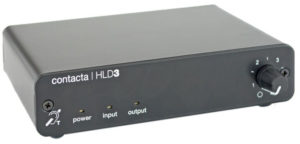by Neil Bauman, Ph.D.
A man explained:
I found an interesting effect with my induction loop system. Seems if you turn up an electric guitar, the sound from the induction loop gets picked up by the guitar pickups and broadcast through the guitar amplifier. Ever heard of this before?
Yes, you are not the only one to discover this phenomenon. It can be a problem when you loop the platform of a church or auditorium and then want to use an electric guitar up there. The electric guitar pickups are basically t-coils so they pick up the varying magnetic field from the loop system if they are close enough to it, just like the t-coils on your hearing aids do.



Yes, this parasitic signal detection from the pickup coils on an electric guitar can be quite awkward! (I speak from experience as an occasional guitar player in churches fitted with induction loop systems. On more than one occasion, a rehearsal has gone well when the loop was turned off, then a live horror story in front of a congregation when the loop was active!) The most awkward situations occur with “single coil” pickups.
So, what can be done (short of miming on the guitar or switching off the loop for band spots)? Well, it is all a matter of minimisation of the annoying effect. Firstly, do tests to find the lowest power setting of the loop amplifier that will keep the customers happy. Secondly, explore what changes of location are practicable for the guitar player. The induction loop field strength will vary from place to place, and moving a small distance might locate a weaker field region. Also, turning somewhat to the left or right will be significant. Ideally, the induction loop field should pass down through the room vertically, so if the plane of guitar pickup coil is also vertical, then stray signal should be negligible. In reality, this situation is unlikely to be found. Thirdly, (and I will not go into this – if you have understood me so far, you will be able to figure this out!) it would be possible to arrange some induction loop field cancellation for the performance area by running a cancelling signal from a subsidiary loop around the performance area fed an antiphase current, the second loop being connected back to its supply via a non-inductive twisted pair.
[Tyneside, England]
An alternative solution – not a complete cure, but probably a useful improvement – recently occurred to me. It would be easier to explain with the aid of a diagram, but here goes!
Imagine a symmetrical area formed by a continuous wire – say, a square. If electrical connections are made to diagonally opposite corners of the square (or to the mid-points of opposite sides), and a current is made to flow between these points, the magnetic field induced WITHIN the square will not be significant. (Because there are 2 parallel paths carrying equal currents current in the same direction, resulting in substantial magnetic field cancellation inside the square.)
So, sketch a plan view of the auditorium where the pick-up problem is occurring. Outline on this the induction loop location, and the playing position of the guitars. The task is then to route a wire, which will carry half of the loop current (probably positioned between the players and the audience), electrically connecting this parallel path to the opposite sides of the existing loop installation. The Band thus plays, as it were, inside the “square”, mentioned above: in a zone with reduced loop field. The loop field where the audience is located should, in theory, be relatively unaffected. (What is required is a sub-loop within the previous loop. Roughly speaking, an “O” turned into a “B”. The band is located in the smaller upper part of the “B”. The loop amplifier is connected to the lower portion of the “B”, and this part of the loop surrounds the audience.)
One can also change the pickup on the guitar to a “humbucker” pickup.